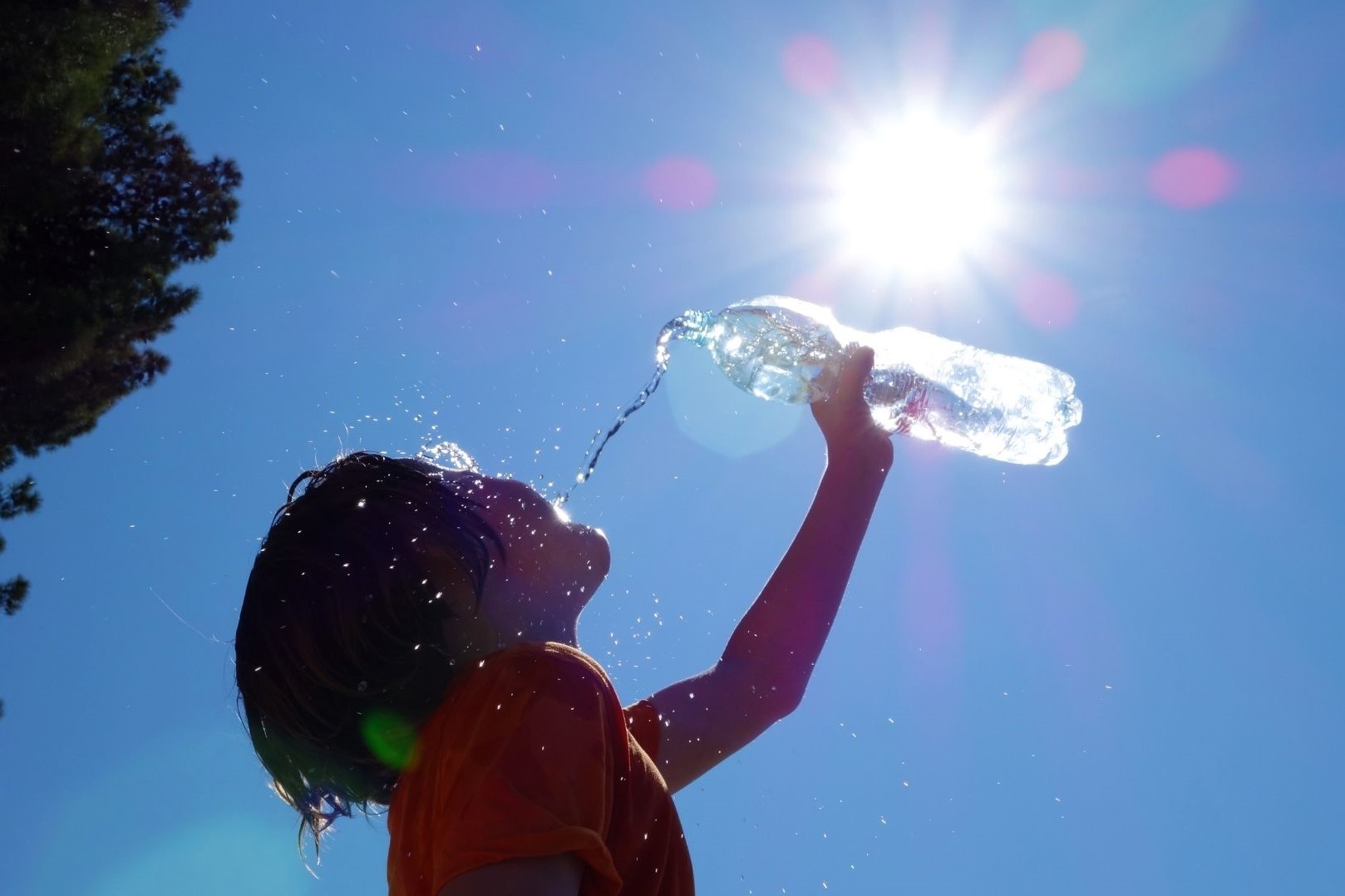
Children at risk of heat-related illnesses in hot weather: here's what to do
Heat and heat-related illnesses, expert advice to avoid risks: educate children to drink and wear loose, light clothes
Heat cramps, heat exhaustion and heat stroke, these are the pathologies that intense heat can cause, associated with other aggravating factors (humidity, closed places, poor ventilation, thick clothes), especially in children.
“To maintain a constant body temperature, our body generates heat, which it dissipates by cooling itself through sweating and skin conduction.
This natural cooling system, when it is very hot, can progressively fail, allowing our body temperature to reach dangerous levels,’ explains Flavio Quarantiello, medical director at the complex operating unit of Paediatrics and Adolescentology Aorn S. Pio Benevento, in an article published on the website of the Italian Society of Paediatrics (Sip).
Heat and children: how do heat-related illnesses manifest themselves and how do we intervene?
HEAT CRAMPS
‘They are sudden, very painful, short-lasting muscular contractions affecting the muscles of the legs, arms, abdomen,’ explains Quarantiello.
‘They can occur during or after intense physical activity in extreme heat and are due to the considerable loss of liquids and salts due to intense sweating.
Children are particularly at risk of experiencing heat cramps when they do not drink enough fluids.
Although very painful, heat cramps are not serious in themselves, but they can be the first sign of a more serious heat illness, so they should be treated immediately to avoid problems’.
What to do? The expert explains that one should ‘stop exercising immediately, take the child to a cool place by sitting or lying down, and offer him drinks containing sugar and minerals (so-called sports drinks).
Stretching and gentle massage of the muscles involved are also helpful in alleviating the symptoms’.
HEAT EXHAUSTION
It is a more serious heat illness that occurs when a child in a hot climate or in a very hot (and closed) environment has not drunk enough fluids.
The expert explains that ‘symptoms may include increased thirst, weakness, dizziness or fainting, muscle cramps, nausea and/or vomiting, irritability, headache, increased sweating, cool and clammy skin, elevation of body temperature (< 40°C)’.
What to do? Quarantiello emphasises that one must ‘immediately take the child to a cooler place sheltered from the sun or in a car with air conditioning on or in a shaded area, remove excess clothing, encourage the child to drink water or cold liquids containing salts and sugars, such as sports drinks in frequent sips, wrap a wet towel with cold water or wet the child’s skin with cool water’.
And then ‘call 118 or your paediatrician (a child who is too weak to drink may need intravenous hydration)’.
If not treated immediately, heat exhaustion can turn into heat stroke, a much more serious illness.
HEAT STROKE
It is ‘the most severe form of heat illness and is a life-threatening medical emergency,’ the expert emphasises.
“In heatstroke, the body can no longer regulate its own temperature, which can rise to over 41.1°C, causing brain damage or even death if not treated quickly.
Intensive and urgent medical care is needed to control and lower the body temperature.
Children are at risk of heat stroke if they are overdressed or engage in strenuous physical activity when it is very hot and do not drink enough fluids.
Heat stroke can also occur when a child is left or trapped in a car on a hot day.
When the outside temperature is 34°C, the temperature inside a car can reach 52°C in just 20 minutes, causing the trapped child’s body temperature to rise rapidly to dangerous levels’.
What to do when faced with heat stroke?
First of all, ‘Call 118 immediately,’ notes Quarantiello.
The symptoms of a child suffering from heatstroke are: severe headache, weakness, dizziness, confusion, nausea, accelerated breathing and heartbeat, loss of consciousness, convulsions, little or no sweating, reddened, hot and dry skin, and a body temperature > 40°C.
While waiting for the 118 emergency services to arrive, ‘take the child to a cool or shady place, have him lie down and lift his legs, undress him and bathe him with lukewarm water, if the child is awake and conscious, give frequent sips of cool, clear drinks, if the child vomits, turn him on his side to prevent choking, do not give liquids if the child is not awake and conscious’.
HOW TO PREVENT HEAT ILLNESSES?
To prevent heat illnesses, however, a number of precautions can be taken.
First of all, ‘educate children to always drink a lot before and during physical activity in the summer season and when they are exposed to the sun for a long time, even if they are not thirsty,’ explains Quarantiello, ‘then make them wear loose, light-coloured clothes and light hats on very hot days, use protective sun creams and frequently wet their heads and nape of their necks with cool water if they are exposed to the heat for a long time.
On hot or humid days it is good to limit outdoor physical activity during the hottest hours’.
And finally, ‘educate children to go to cool places sheltered from the sun, and rest and hydrate immediately whenever they feel overheated,’ the expert concludes.
Read Also:
Emergency Live Even More…Live: Download The New Free App Of Your Newspaper For IOS And Android
Colour Changes In The Urine: When To Consult A Doctor
The Colour Of Pee: What Does Urine Tell Us About Our Health?
Summer And High Temperatures: Dehydration In Paramedics And First Responders
First Aid For Dehydration: Knowing How To Respond To A Situation Not Necessarily Related To The Heat


